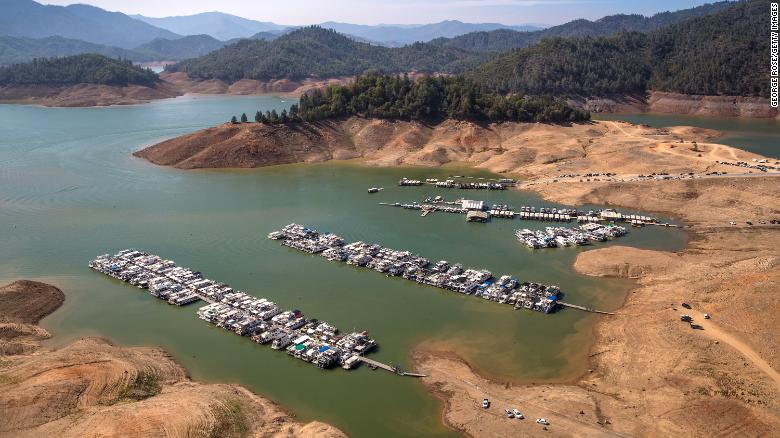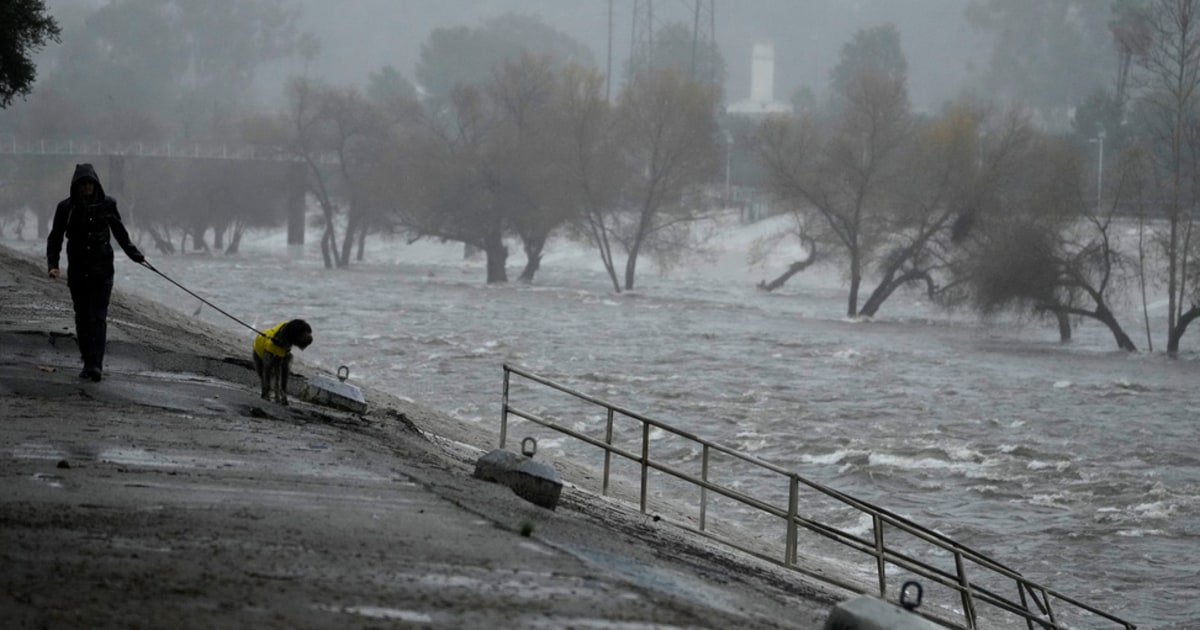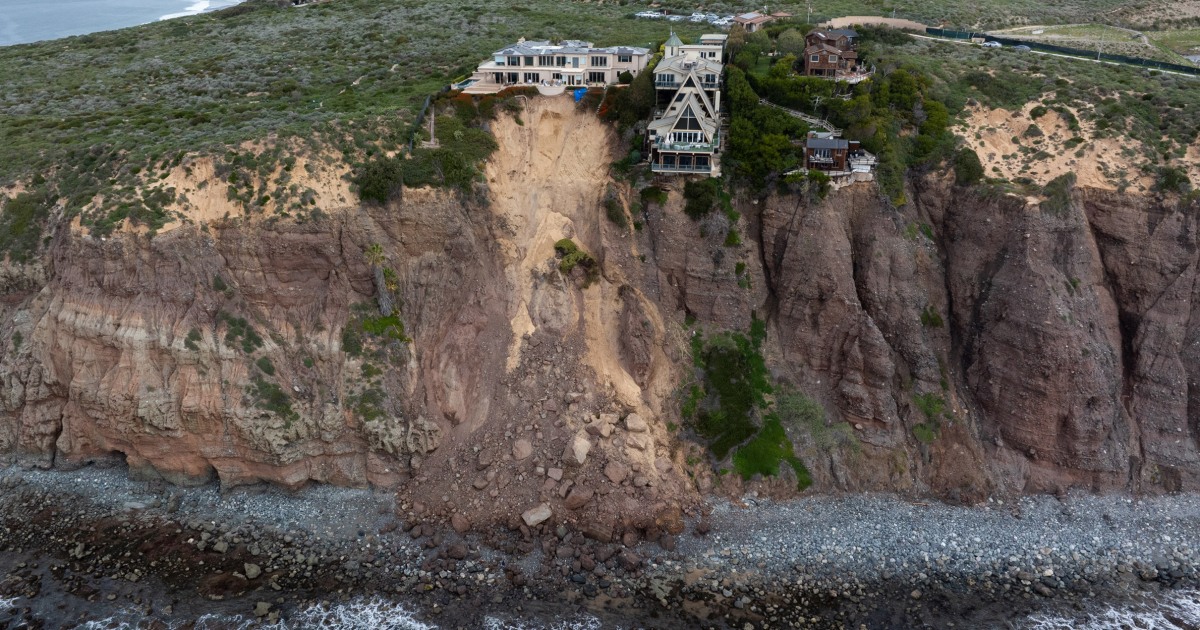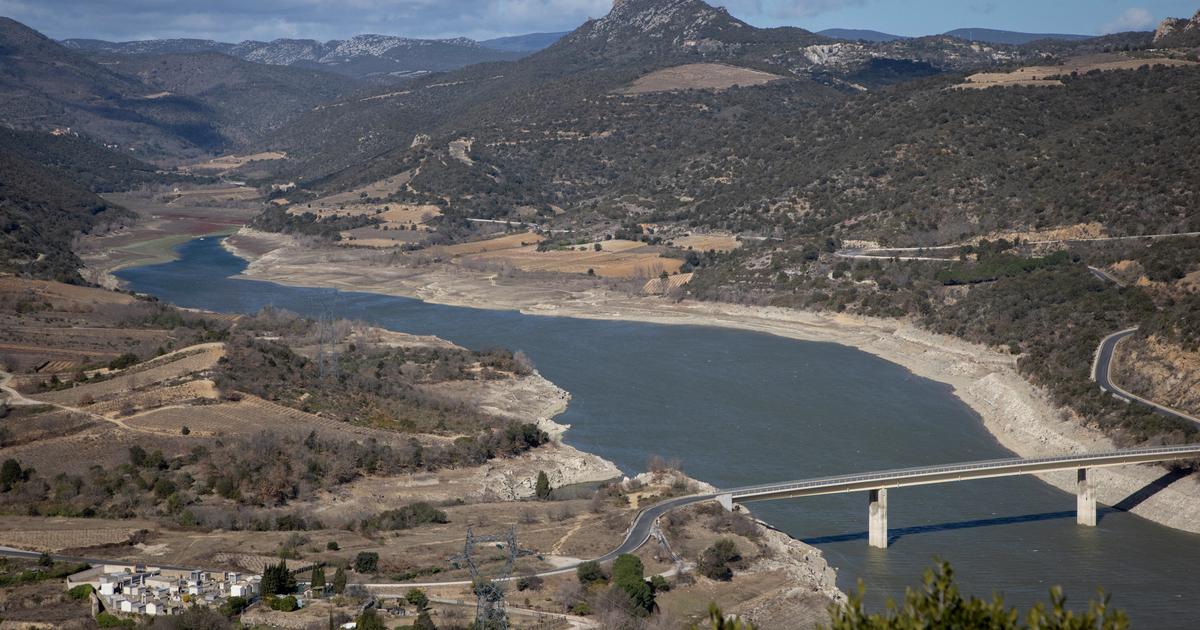Will California's water rationing measures be enough?
1:53
(CNN) —
Against the backdrop of the water crisis in the Colorado River Basin, where the nation's largest reservoirs are drying up at an alarming rate, California's two largest reservoirs, Lake Shasta and Lake Oroville, face a similar fight.
Years of low precipitation, snowpack and more intense heat waves have directly fueled unrelenting multi-year drought conditions, rapidly draining reservoirs across the state.
And according to this week's report from the US Drought Monitor, the two major reservoirs are at "critically low levels" at the time of year when they should be at their highest.
California has a long history of drought and fire, but what's happening now is a different chapter.
We explain why
This week, Lake Shasta is only at 40% of full capacity, the lowest level it has been in early May since records began in 1977. Meanwhile, further south, Lake Oroville is at 55% of its capacity, i.e. 70% of where it should be around this time on average.
Lake Shasta is the largest reservoir in the state and the cornerstone of California's Central Valley Project, a complex water system made up of 19 dams and reservoirs, as well as more than 500 miles of canals, stretching from Redding to the north, all the way south to the drought-stricken landscapes of Bakersfield.
Drought worsens in this region of the US 0:38
Lake S water levels are now less than half the historical average.
According to the U.S. Bureau of Reclamation, only agricultural customers who hold high-tier water rights and some irrigation districts in the eastern San Joaquin Valley will receive water deliveries from the Central Valley Project this year. .
advertising
"We anticipate that in the Sacramento Valley alone, more than 350,000 acres of farmland will be left fallow," Mary Lee Knecht, public affairs officer for California's Great Basin Region Office, told CNN.
In perspective, it is an area larger than Los Angeles.
“The cities and towns that receive the [Central Valley Project] water supply, including Silicon Valley communities, have been reduced to just health and safety needs.”
Drought affects the agricultural sector in California: layoffs and sacrifices of crops 4:07
The stakes are high with plummeting supply, said Jessica Gable of Food & Water Watch, a nonprofit advocacy group focused on food and water security as well as climate change.
The impending summer heat and water shortages, she said, will hit California's most vulnerable populations the hardest, particularly farming communities.
"California communities are going to suffer this year during the drought, and it's just a question of how much more they will suffer," Gable told CNN.
"Usually it's the most vulnerable communities that are going to suffer the worst, which is why the Central Valley usually comes to mind because this is an already arid part of the state with most of the state's agriculture and the most part of the energy development of the state, which are both water-intensive industries”.
"Only 5%" of water to supply
Lake Oroville is the largest reservoir in the California State Water Project system, which is separate from the Central Valley Project, operated by the California Department of Water Resources (DWR).
It provides water to 27 million Californians and 303,514 hectares of farmland.
Oroville took a major hit last year after water levels dropped to just 24% of full capacity, forcing a crucial California hydroelectric plant to close for the first time since it opened in 1967. lake water was well below the boat ramps, and exposed intake pipes that usually sent water to feed the dam.
Most of California is in a state of emergency due to drought, amid an "acute shortage of water supply"
Though severe storms toward the end of 2021 eased the lake's record low levels, resuming power plant operations, state water officials are wary of another dire situation as the drought worsens this summer.
"The fact that this facility closed last August -- that's never happened before, and the prospects of it happening again are very real," California Governor Gavin Newsom said at a news conference in April while touring the dam. of Oroville, and pointed out the weather.
The crisis is changing the way water is delivered across the region.
The terrible threat to redwoods in California 3:48
According to the DWR, low levels at the Oroville Reservoir are pushing water agencies that depend on the state project to "receive only 5% of their requested supplies in 2022," DWR spokesman Ryan Endean told CNN.
"Those water agencies are urged to enact mandatory restrictions on water use to stretch their available supplies through the summer and fall."
The Bureau of Reclamation and DWR, along with federal and state agencies, are also taking unprecedented steps to protect endangered winter chinook salmon for the third consecutive year of drought.
Recovery officials are in the process of securing temporary cooling units to chill the water at one of their fish hatcheries.
Lake Shasta, California's largest water reservoir, is the key source for collecting and delivering large amounts of water through the Central Valley and into the Sacramento River Delta, where the California State Water Project begins (also known as the California Aqueduct), which transports water to Southern California and everything in between.
Both reservoirs are a vital part of the state's larger water system, interconnected by canals and rivers.
So even if the smaller reservoirs have been replenished by winter precipitation, the drop in water levels in Shasta and Oroville could still affect and drain the rest of the water system.
The water level in Folsom Lake, for example, reached nearly 450 feet above sea level this week, which is 108% of its historical average for this time of year.
But with Shasta and Oroville's low water levels, Folsom Lake's annual water releases this summer may need to be higher than normal to offset significant shortages from the other reservoirs.
California relies on winter storms and rainfall to store snow in the Sierra Nevada, which then gradually melts during the spring, replenishing reservoirs.
Facing back-to-back dry years and record heat waves that pushed the drought into historic territory, California got a taste of the rain it was looking for in October, when the first major storm of the season made landfall.
Then, in late December, more than 5 meters of snow fell in the Sierra Nevada, which researchers say was enough to break decades-old records.
Snow record recorded in California's Sierra Nevada 0:40
But precipitation leveled off in January, and the water content in the state's snowpack this year was only 4% of normal at the end of winter.
Further down the state in Southern California, water district officials announced unprecedented water restrictions last week, requiring businesses and residents in parts of Los Angeles, Ventura and San Bernardino counties to reduce watering. outdoors one day a week from June 1.
Gable said that as California enters a future much hotter and drier than anyone has ever experienced before, officials and residents must rethink the way water is managed across the board, or the state will remain without to be prepared.
"Water is supposed to be a human right," Gable said.
"But we're not thinking about that, and I think until that changes, unfortunately, water scarcity will continue to be a symptom of the worsening climate crisis."
CaliforniaExtreme drought California



/cloudfront-eu-central-1.images.arcpublishing.com/prisa/R65LZW6EVZDNDFZPK25RWRQTVY.jpg)











